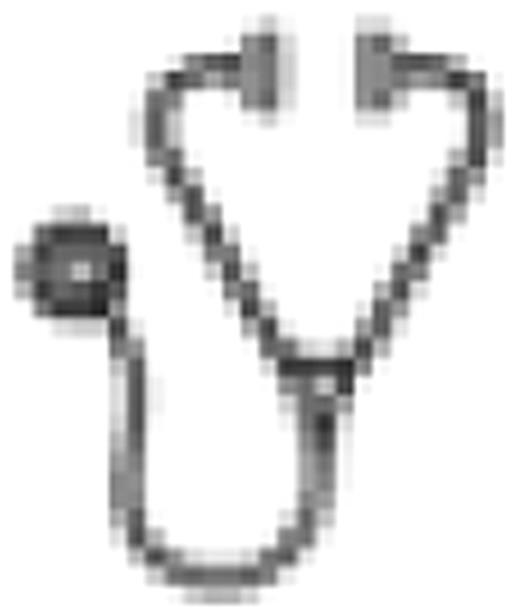Abstract
Abstract 184
Acute Myeloid Leukemia - Therapy, excluding Transplantation: Pediatric and Adult AML Therapy
With improving initial antileukemic therapy, CNS disease might become more important in AML. We therefore evaluated the incidence of CNS involvement in a large series of children with first relapsed AML. In addition, clinical and biological features of children with and without CNS involvement at relapse were compared, and finally the prognostic significance of CNS involvement at relapse was studied.
Patients were selected from those registered in the setting of study Relapsed AML 2001/01 (ISRCTN code 94206677), based on having first relapsed AML and precise information on the location of the relapse, and on the type of CNS involvement. The latter was distinguished in asymptomatic and symptomatic disease. The protocol prescribed intensive intrathecal triple chemotherapy in case of CNS disease: first dose immediately before start of reinduction course 1. Second and subsequent doses every 7 days until 1 week after complete blast clearance of the CSF or disappearance of radiological abnormalities. Then, 2 more doses were given, one immediately before the start of the second reinduction course, and the other at the start of consolidation treatment. Cranial radiotherapy was not generally recommended and was actually used in 18% of patients with CNS relapse. Systemic therapy consisted of FLAG with or without liposomal daunorubicin (1:1 randomisation), followed by FLAG and allogeneic stem cell transplantation. This clinical study also enrolled patients with a combined relapse, or an isolated extramedullary relapse, or a bone marow relapse (isolated or combined) with <20% blasts in the BM, and these patients were also eligible for randomisation. The study was closed for enrollment in April 2009, and median follow-up for patients at risk is well above 3 years.
Out of 477 patients, 45 (9.4%) had CNS relapse, which percentage did not differ significantly between individual study groups. The far majority (41/45) of these patients had a combined relapse, only 4 patients had isolated CNS relapse. All 4 isolated relapses concerned early relapse, as compared to 66% of patients with a combined relapse including the CNS and to 48% of patients with first relapsed AML not involving the CNS (p-trend = 0.004). For further analyses, isolated and combined relapses involving the CNS were combined. Patients with CNS relapse were younger at relapse, mean 5.6 (SD 5.2) vs 9.7 (SD 5.3) years, p<0.0001. There was a trend for a higher percentage of males among those with CNS involvement, 71 vs 57%, p=0.07, and a trend for a higher WBC (mean 22.1 vs 13.4 × 109/l, p=0.09). Patients with CNS relapse more often had AML FAB type M5 (48 vs 16%, p<0.001), and more often MLL gene rearrangements (26 vs 11%, p=0.049) than patients with non-CNS relapse. Clinical outcome did not differ significantly between both groups, and patients with relapsed AML and CNS involvement had a 58% CR2 rate (vs 64% for the remaining patients), and a 4-years pOS of 32% (SE 8%) vs 37% (SE 2%) for the remaining patients. The majority of events within patients with relapsed AML and CNS involvement concerned refractory disease (12/45 patients), while early death occurred in 7 patients, death in CR in 3 patients, and 9 patients developed a 2nd relapse (in 3/9 patients again involving the CNS). Relapsed patients with CNS involvement had a higher rate of second complete remission when treated with liposomal daunorubicin, than if treated with FLAG only (82 v 38%, p=0.019), but overall survival was not significantly different between both treatment arms in this subgroup of patients.
Isolated CNS relapse is rare in pediatric AML, but CNS involvement is observed in more than 9% of patients with first relapsed AML. CNS involvement is more frequent in younger patients, males and those with a high WBC at relapse. Biologically, patients with CNS involvement at relapse more frequently have acute monoblastic leukemia and MLL gene rearrangement, than patients with non-CNS relapse. Despite CNS disease at relapse, second complete remission was achieved in more than half of patients, and long-term survival was achieved in about one third of patients. Thus, intensive salvage treatment of pediatric patients with relapsed AML and CNS involvement is justified. Prevention of CNS relapse by improved therapy for newly diagnosed AML is warranted, with special attention to several subgroups which seem at higher risk for CNS relapse.
Off Label Use: Liposomal daunorubicin in pediatric relapsed AML.

This icon denotes a clinically relevant abstract
Author notes
Asterisk with author names denotes non-ASH members.

This feature is available to Subscribers Only
Sign In or Create an Account Close Modal